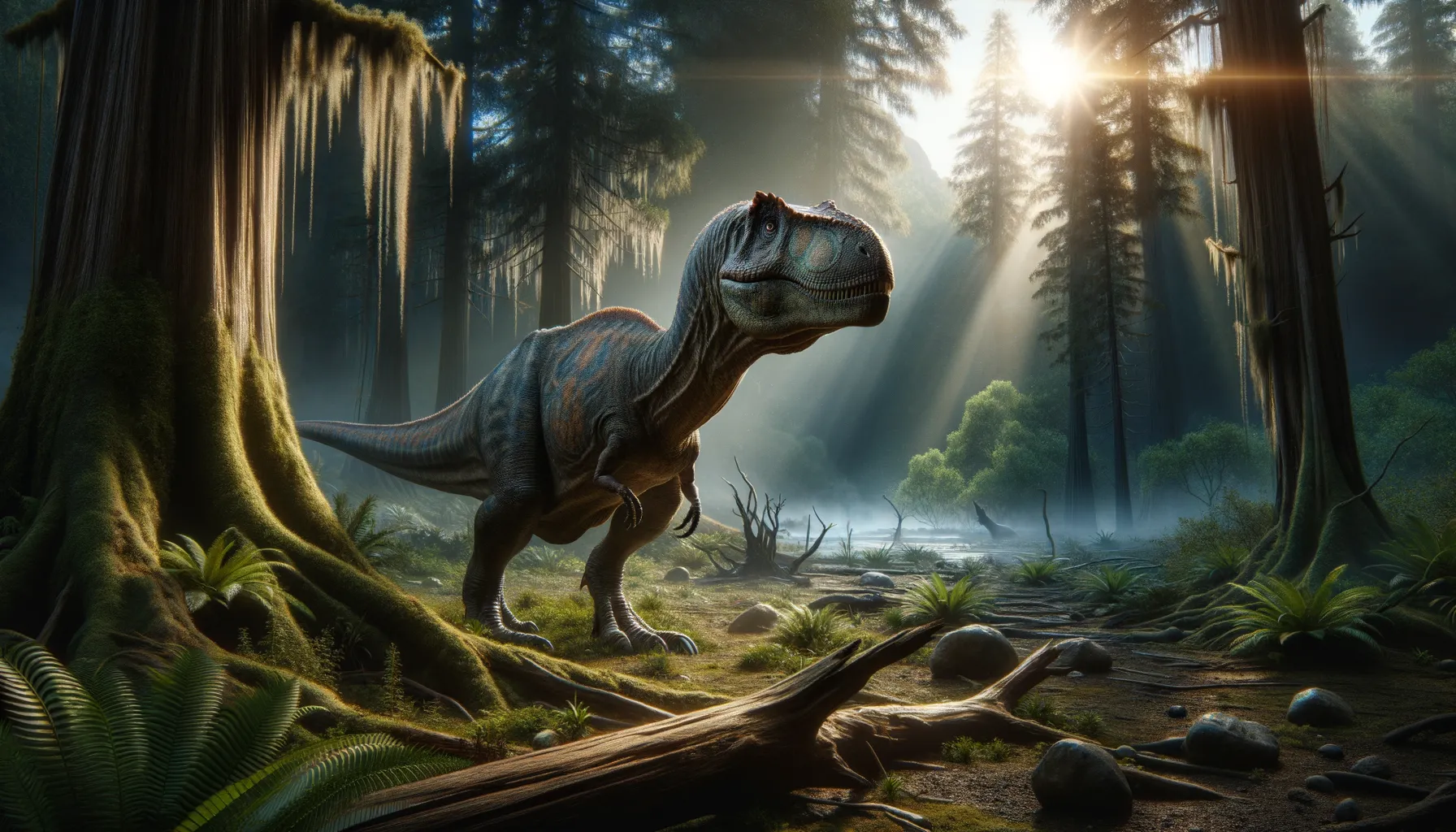
Hanwulosaurus
A silent giant of the ancient forests.
Period
Cretaceous
Length
Measured roughly eight meters from head to tail.
Height
Stood about two meters tall at the hip.
Weight
Around three tonnes when fully grown.
Hanwulosaurus is a lesser-known dinosaur from the Cretaceous period, characterized by its moderate size and herbivorous diet. Its fossil remains offer important insights into the dinosaur fauna of its time. Unlike larger predators, it stayed within its limits, which likely helped it survive in various environments. Ongoing research into its remains continues to uncover fascinating details about its life and the challenges it faced.
Diet
Hanwulosaurus was a herbivore, feeding primarily on the ferns, cycads, and conifers that flourished during the Cretaceous. Its teeth and digestive system were well-suited for processing tough, fibrous plant material.
Hunting
As a herbivore, Hanwulosaurus did not hunt but foraged for plant material. It likely used its size and bulk to push through dense vegetation, seeking out its favored plant foods.
Environmental challenges
Hanwulosaurus faced various environmental challenges, such as changes in climate that affected plant availability. Predation from larger theropod dinosaurs was another concern, necessitating group living for increased protection. Furthermore, competition for food resources with other herbivorous dinosaurs likely influenced its behavior and foraging strategies.
Speed
This dinosaur moved at a moderate pace.
Lifespan
Estimated to live 20 to 30 years.
First discovery
Uncovered during excavations in the 1990s.
Fun Facts
- Hanwulosaurus was a dinosaur that lived during the Late Cretaceous period, around 70 million years ago.
- This dinosaur was discovered in China, in a region known for rich fossil records.
- Hanwulosaurus is believed to have been a herbivore, munching on plants rather than other creatures.
- With its long neck, Hanwulosaurus could reach high into trees, similar to how modern-day giraffes feed.
- Scientists think Hanwulosaurus could have had unique armor-like scales for protection.
- Its name, Hanwulosaurus, comes from the combination of the Chinese region 'Hanwu' and the word 'saurus', which means lizard.
- This dinosaur adds to the diversity of fascinating species found in Asia, showcasing the continent's ancient past.
Growth and Development
Young Hanwulosaurus dinosaurs probably grew rapidly, reaching near-adult size within a few years. This fast growth would have helped them evade predators. Bone studies indicate that they experienced several growth spurts, correlating with resource availability. As they matured, their body structures became more robust to support their size.
Habitat
Hanwulosaurus lived in varied environments, ranging from coastal regions to inland forests. It preferred areas with ample vegetation, which provided food and shelter. The presence of water bodies nearby would have been essential for maintaining a stable ecosystem. Seasonal changes in these habitats might have influenced migratory patterns in search of better foraging grounds.
Interaction with other species
Hanwulosaurus coexisted with various other dinosaurs, both herbivores and carnivores. It likely formed herds as a defense mechanism against predators. In its ecosystems, it played a significant role as a primary consumer, aiding in the maintenance of the plant-animal balance. Relations with other herbivores might have involved competition for food but also mutual benefits in spotting predators.
Natural lifespan
Hanwulosaurus likely lived around 20 to 30 years in the wild.
Reproduction
Hanwulosaurus was oviparous, laying eggs in carefully chosen nesting sites. Mothers may have guarded their nests to protect eggs from predators and environmental dangers. The young, upon hatching, would have been relatively independent but likely stayed in family groups for safety and learning. This social structure provided essential support during their vulnerable early life stages.
Social behaviour
Hanwulosaurus likely exhibited herd behavior for protection. Living in groups would have assisted with spotting predators early and coordinated movement for food and migration. Social interactions possibly involved cooperation and communication, vital for successful foraging and nesting. Within these herds, hierarchical structures might have existed, based on size and age.
Fossil locations
Fossils of Hanwulosaurus are primarily found in Asia, particularly in regions known for rich Cretaceous deposits. The initial significant discoveries were made in China's Liaoning Province, famous for its well-preserved dinosaur fossils. These fossil sites provide crucial information about the diversity and ecology of dinosaurs during that era. The continued study of these locations helps paleontologists piece together the ancient landscapes in which Hanwulosaurus lived.
